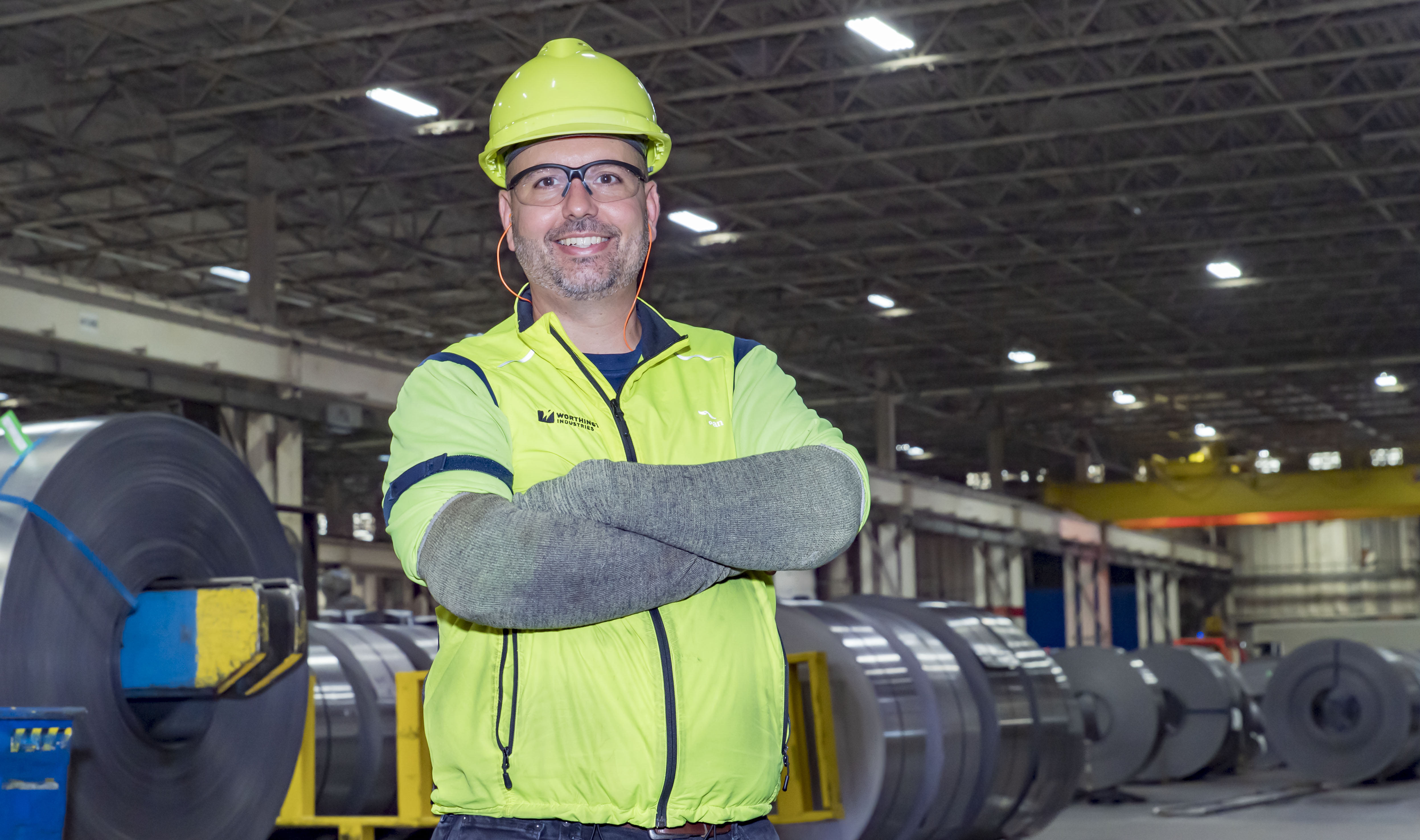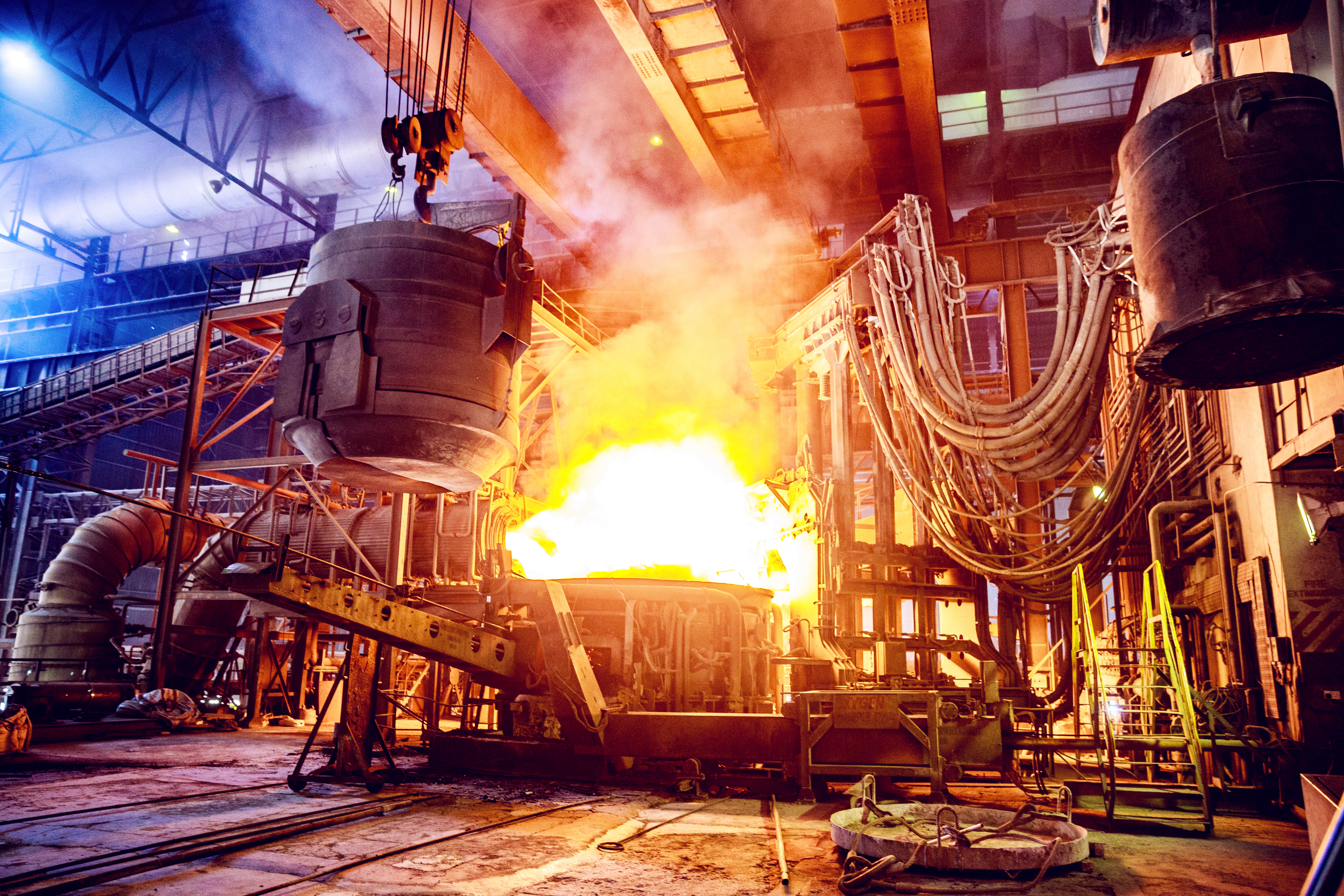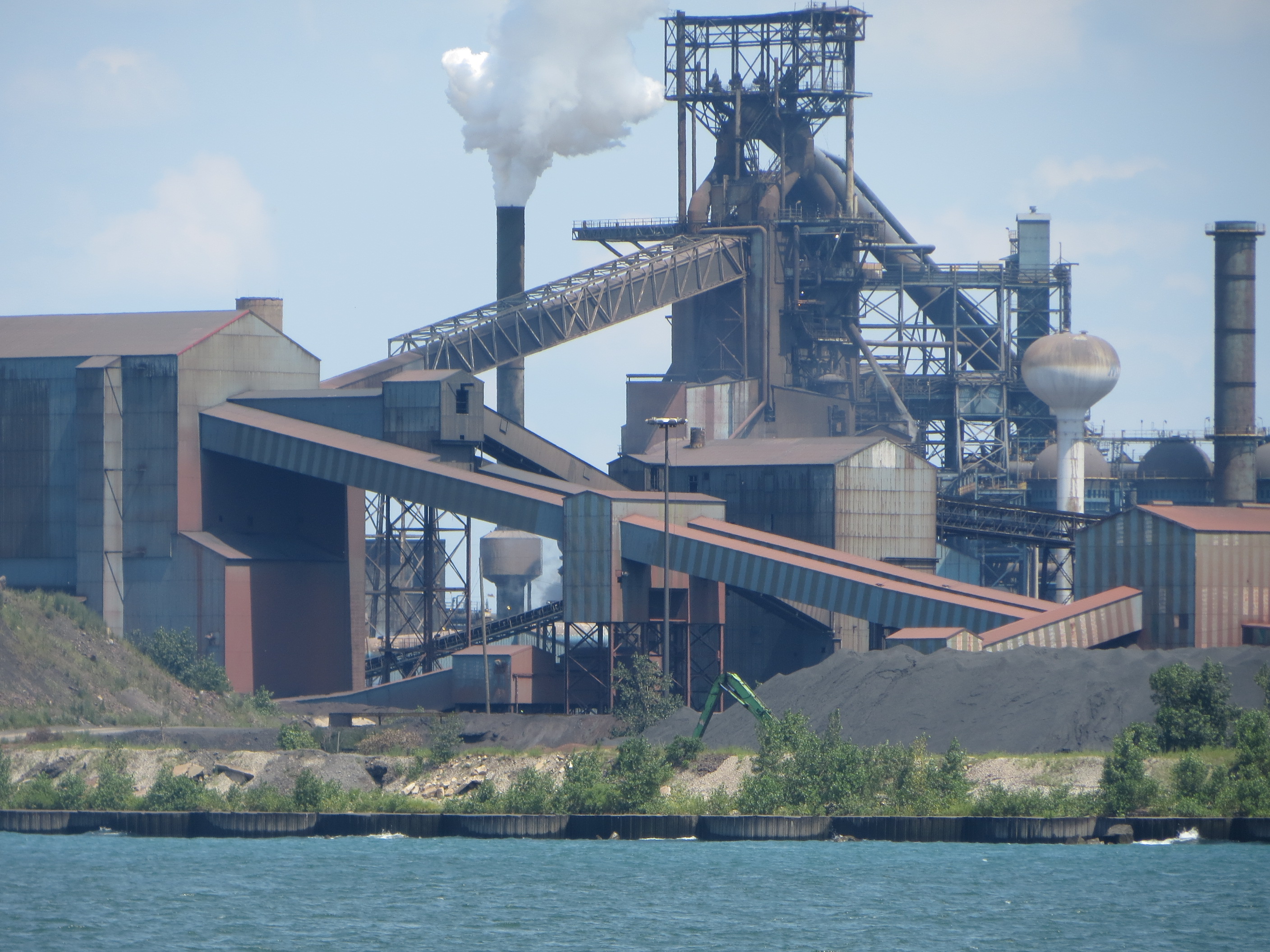Working With Worthington Series
Introduction
In today's competitive manufacturing landscape, a trusted steel partner must offer more than exceptional product quality, on-time delivery, and excellent customer service. As environmental concerns grow among regulators and consumers, sustainability initiatives have become a vital differentiator and source of long-term value.
Yet for many companies, sustainability remains an ambiguous goal to achieve. Gaining expertise takes time, and pursuing it can distract from other top-of-mind business priorities.

However, at Worthington Steel, a North American steel processing company, we recognize that environmental responsibility is directly tied to business success in some facets. That is why our Environmental, Health, and Safety (EH&S) team is focused not only on reducing our impact but also on providing resources to help you do the same.
This blog explores how Worthington Steel supports you in achieving your sustainability objectives through practical guidance, precise data, and industry expertise. You can read it straight through or jump to sections that are most relevant to your needs.
- The Basics of Sustainability in Manufacturing
- What Worthington Steel Does for Our Customers
- Data and Reporting
- Decision Making
- Sharing Progress
- What Worthington Steel Does Internally
- Green Star Program
- Transportation
- Why This Matters: Practical Sustainability, Not Greenwashing
The Basics of Sustainability in Manufacturing
Environmental concerns in manufacturing became a global focus in the late 20th century. As awareness grew from environmental incidents and scientific consensus, so did the pressure from government entities and stakeholders for accountability and improved practices.
This led to the development of the modern ESG framework, where businesses commit to improving their impact on the environment (E), their employees and communities (S), and their governance (G). This framework expanded on its predecessor, Corporate Social Responsibility (CSR), which was well known to many companies at the start of environmental regulation.
ESG reporting provides transparency to stakeholders and helps companies track their progress over time. However, there are no universal standards for emission calculations or certifications, making it challenging to navigate this landscape.
This is where Worthington Steel's customer partnership dynamic proves to be a valuable asset. With decades of experience in the steel industry and our processes, we can provide the necessary data and answers transparently to help you make informed decisions with clarity and confidence at every step. Our EH&S team is there to help with required certifications, data dissemination, and calculations.
What Worthington Steel Does for the Customer
Transparent Data and Reporting
As an OEM or Tier 1 supplier, you are facing growing pressure from stakeholders to account for and reduce Scope 3 emissions. To meet this, collecting accurate data is critical. That is where Worthington's EH&S team plays a role in delivering our data with detail and transparency.
Worthington can provide historical emissions data by facility to help you analyze your steel sourcing over time and the direct Scope 3 emission reductions associated with us. This can help evaluate your supply chain and track progress on overall goals.
Also, to include in your report are product-specific carbon profiles showing the embedded carbon per ton of steel processed at Worthington, making it easier to be detailed in your Scope 3 emission disclosures.
Additionally, our team supports navigating complex compliance requirements across regions. Whether it's documentation for Clean California Steel certification to enable infrastructure bids or assisting with Carbon Border Adjustment Mechanism (CBAM) declarations for steel shipped to the European Union, Worthington Steel can provide credible, timely information to you.
Informed, Feasible Decision Making
Sustainable sourcing requires more than meeting minimum requirements; it involves understanding the trade-offs between costs, availability, and environmental impacts. Navigating these considerations can be complex, particularly when balancing short-term operational needs with long-term sustainability goals.
Some of our partners came to us asking about Integrated vs. Mini mills. Questions like "What would it take to reduce emissions in our steel supply?" and "What are the trade-offs in cost, product availability, and feasibility?" Our EH&S team, often in collaboration with our metallurgists and commercial teams, helps answer those questions with real data and tailored recommendations.
Tools like Environmental Product Declarations (EPDs) provide transparency that supports informed decision-making. For instance, EPDs can show that steel from mini mills emits around 1.1 metric tons of CO2 per ton, while integrated mills can produce roughly twice that amount. With this level of insight, procurement teams can align sourcing strategies with both operational and sustainability priorities.
By providing this level of clarity, we empower our customers to make sourcing decisions that are both technically feasible and cost-effective, aligning with their strategic business goals. These insights are especially valuable for manufacturers seeking to meet aggressive 2030 reduction goals or those needing to demonstrate measurable progress to stakeholders.
Sharing Progress and Driving Accountability
Sustainability performance is not just a matter of internal tracking but relates to how leading companies evaluate their suppliers. Recognizing this shift, Worthington Steel actively participates in independent assessment platforms, such as EcoVadis, where our practices are benchmarked against global peers in areas including environment, labor safety, ethics, and supply chain management.
We share these scores, along with our annual ESG reports, so that procurement teams and you can better understand our progress. Our most recent EcoVadis rating places Worthington Steel in the top quartile of intermediate steel processors. This score reflects our ongoing efforts to meet rigorous ESG goals, our commitment to continuous improvement, and our ability to meet customers' expectations.
For our customers who may not be aware of these resources, please feel free to follow our EcoVadis account to track our environmental progress and request our records to help inform your procurement decisions.
Verdict: At Worthington Steel, we're not here to push costly or drastic sustainability changes. Instead, we focus on providing clear data and practical support to help customers make informed decisions. Our goal is to help you pursue sustainability improvements that align with your business, deliver real value, and positively impact your triple bottom line.
What Does Worthington Steel Do Internally?
Operational Sustainability in Action: Green Star Program
To effectively deliver on our promises to stakeholders regarding sustainability progress, Worthington Steel developed a plant-level initiative called the Green Star Program. Every facility is challenged each quarter to implement measurable improvements in energy efficiency, water usage, and waste reduction. These projects are not only beneficial for the environment, but they are also designed to deliver tangible operational value.
In the area of energy efficiency, maintenance teams utilize diagnostics to detect and correct inefficient motors, employing tools such as vibration diagnostics and amperage monitoring. This allowed for a reduction in power consumption while extending the equipment's useful life.
Water conservation efforts have also made a significant impact at our Delta facility. Updates to processes have saved millions of gallons annually and improved the quality of discharge to the Maumee River. These changes not only reduce environmental impact but also strengthen compliance and plant performance.
Even in regions with unique climate challenges, we have found innovative ways to reduce waste and improve efficiency. At our Tempel Mexico facility, for example, the team developed a closed-loop system to reclaim and purify air conditioning condensation using reverse osmosis and charcoal filtration.
These models exemplify resource efficiency and serve as a testament to what is possible when sustainability is approached with creativity, intention, and innovation.
Transportation & Emission Efficiency
Emissions associated with transportation are a key part of the environmental footprint in steel supply chains. Recognizing this, Worthington Steel has focused on identifying practical ways to improve freight efficiency without disrupting delivery reliability.
A small but impactful adjustment was when the transportation team shifted from a single to a dual-coil truckload, resulting in a 60% increase in freight efficiency. This change significantly reduced emissions per ton of steel delivered, offering immediate benefits for customers working to measure and reduce their Scope 3 emissions.
Verdict: We share these successes to demonstrate how targeted operational improvements can support both environmental goals and supply chain performance. Our approach is opportunistic, focusing on programs that cut costs, boost efficiencies, and minimize our environmental impact while making progress on our promises. These kinds of practical, high-return initiatives help us stay competitive, operationally strong, and sustainably focused to best support our customers.
Practical Sustainability, Not Greenwashing
For manufacturers in industries such as automotive, energy, and construction, the pressure to reduce emissions is real, often accompanied by cost constraints, evolving regulations, and operational complexity. In this environment, sustainability initiatives must deliver tangible value to be effective.
At Worthington Steel, our approach is rooted in practicality. Rather than promoting costly or idealistic changes, we focus on providing reliable, data-driven insights that help customers make informed decisions. Our goal is to support progress in ways that align with existing business objectives and deliver meaningful outcomes over time.
We view sustainability as a tool to strengthen your operations, not complicate your operations. Through steady collaboration, we are committed to helping you build a smarter, more sustainable supply chain, one decision at a time.
About Worthington Steel
Since 1955, Worthington Flat Roll Steel has been delivering top-quality service that enables our customers to do the same for themselves. Our steel processing capabilities serve a variety of markets, including automotive, heavy truck, agriculture, energy, construction, and many others.
Our commitment to our customers' business goes far beyond supplying steel. We provide advanced materials support, buying strategies, supply chain solutions, and the highest level of customer service and collaboration.
If you are interested in learning more about us at Worthington Steel, want to view our capabilities, or have a question that we can help you answer, please explore our website or call us at 1.800.944.3733. We are here to be partners for your manufacturing goals.


